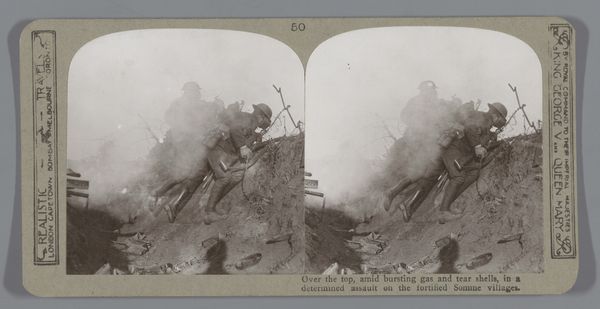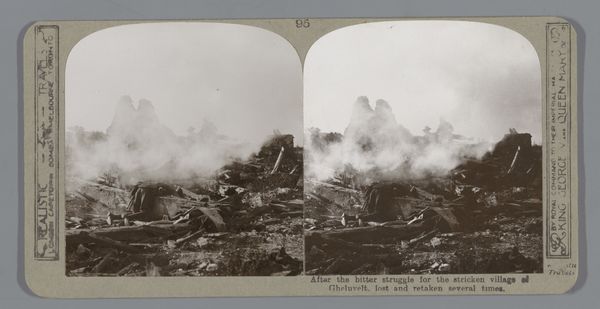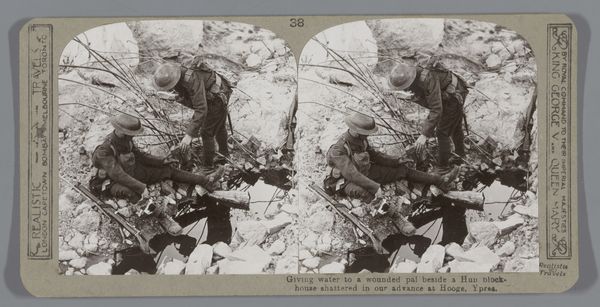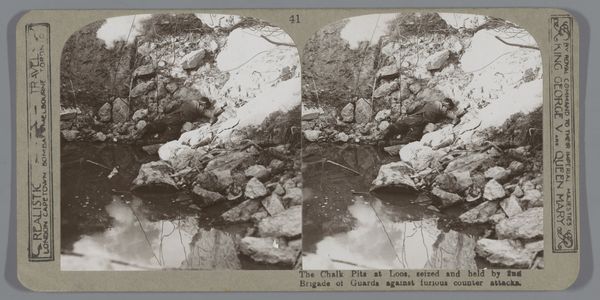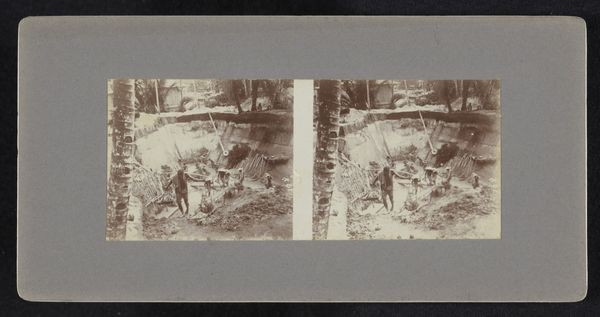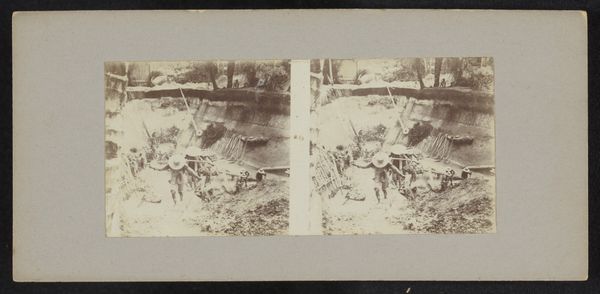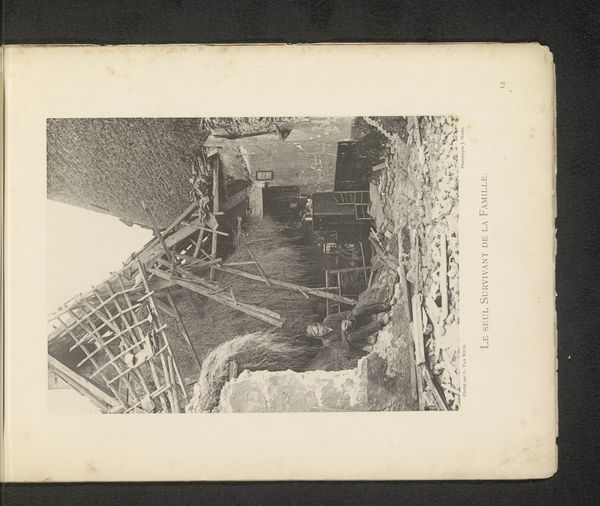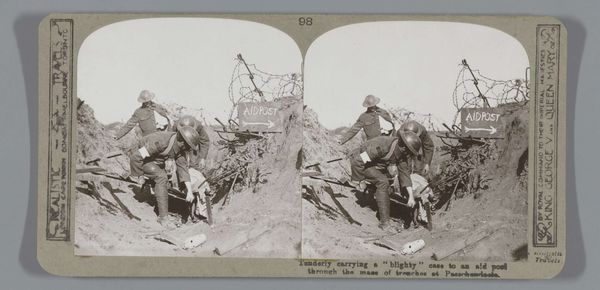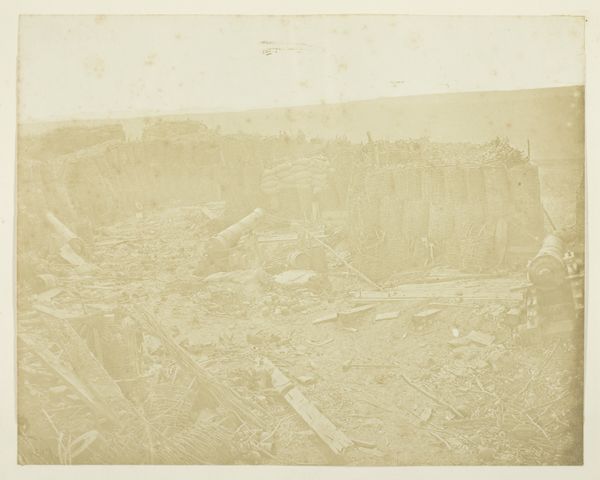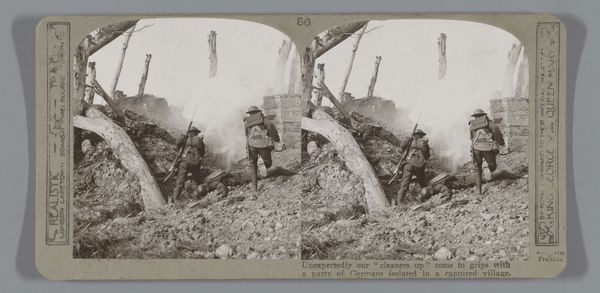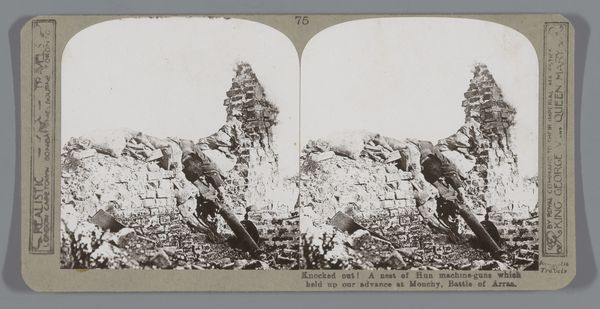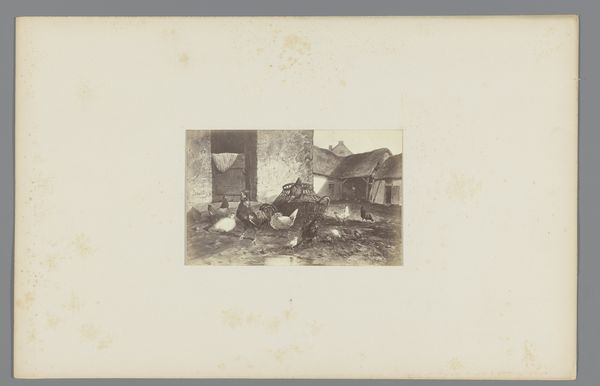
A direct hit from our Monitors off the Belgian coast wipes out a Hun defence battery, Meriakerke 1914 - 1918
0:00
0:00
print, photography, gelatin-silver-print
# print
#
landscape
#
photography
#
gelatin-silver-print
#
history-painting
#
realism
Dimensions: height 85 mm, width 170 mm
Copyright: Rijks Museum: Open Domain
Curator: This gelatin-silver print, likely dating from between 1914 and 1918, is titled "A direct hit from our Monitors off the Belgian coast wipes out a Hun defence battery, Meriakerke." Editor: What strikes me first is the sheer devastation, a visual chaos captured in monochrome. You really feel the violence inherent in this scene. Curator: Indeed. Consider the materials – the gelatin silver print, mass produced, serves to disseminate this image widely. Think about the implied labor here too, not just the soldiers but the photographers, the printers, the distributors all participating in the construction and circulation of this visual propaganda. Editor: I'm immediately drawn to the broken machinery, a twisted wheel sticking up in the foreground. Wheels often symbolize progress, power. Its destruction suggests something far more profound than just the failure of military technology. This twisted machine suggests the collapse of old empires, perhaps? Curator: It highlights the efficiency, almost industrial, nature of wartime destruction. Notice the debris—it’s a granular mess of material remains. We see here how advanced processes lead to ruin, making apparent the consequences of total war on material terms. Editor: The stark contrasts, light and shadow, seem symbolic, don't they? This shattered fortification appears bleached almost entirely by sun light which creates high level of contrasts with its immediate suroundings and, considering it would have provided cover for so long, perhaps symbolises enlightenment brought forth by destructive acts Curator: Well, I’d argue these contrasts are functions of the photochemical process itself, manipulated by the photographer but inherently tied to the silver’s reactivity to light. It serves to illustrate very dramatically the violent incident it depicts as a mass-reproducible event. Editor: But beyond that function of historical record and propaganda, consider that ruins, like this defence battery, hold a potent psychological charge. Destruction creates a space for reflection, perhaps for a catharsis. The photograph aestheticizes devastation, making it palatable for consumption, domesticating the trauma of war to the general audience. Curator: Perhaps we can agree it served as both – a tool of record, propaganda, and even, unintentionally, a memento mori reminding of us the brutal realities and human cost of what went on in the trenches. Editor: Absolutely. Its visual symbolism and its industrial origins both powerfully speak about this time and what it meant.
Comments
No comments
Be the first to comment and join the conversation on the ultimate creative platform.
